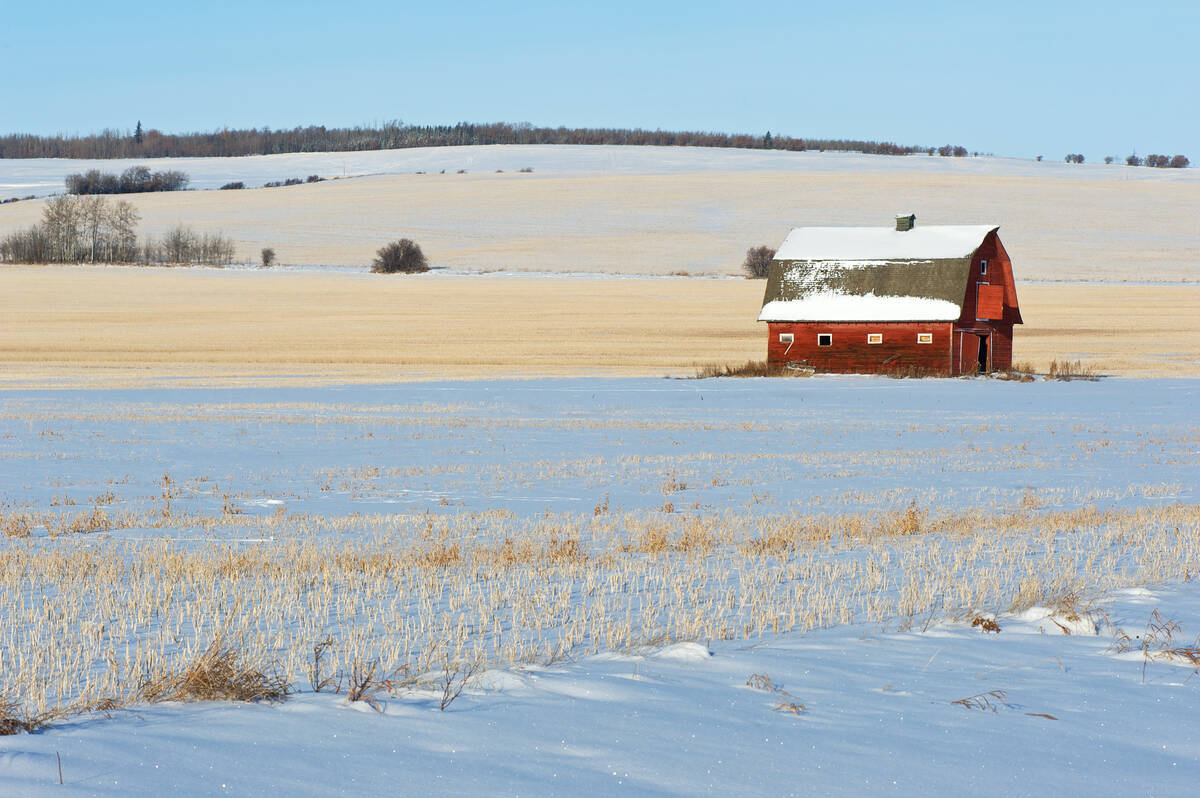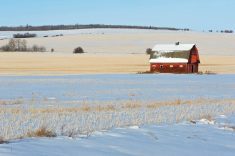Fields across Western Canada are in desperate need of some precipitation ahead of winter freeze-up, and time is running out.
Bruce Burnett, weather analyst with CWB in Winnipeg, said there are only a few weeks before the ground starts to freeze. Depending on the year, winter freeze-up usually occurs sometime between the end of October and mid-November.
Some regions did see some precipitation during the last week, but they still need more, Burnett said.
The majority of the western Prairie region didn’t receive any precipitation at all, he said. and is dealing with very dry conditions.
Read Also

Prairie forecast: Plenty more chances for snow over Holidays
The pattern of Pacific storm system after Pacific storm system looks set to continue for a while longer. We begin this forecast period with a heavy snowfall warning in effect across parts of Alberta.
Once freeze-up does happen, winter weather is expected to bring warmer temperatures in the west and colder temperatures in the east, said Drew Lerner, weather specialist with World Weather Inc. at Kansas City.
Western Canada will probably also see near- to below-average precipitation during the winter, which is different than recent forecasts suggested.
Lerner changed his precipitation forecast for the winter in Western Canada because the influence of El Nino in the region is starting to drop off. If El Nino was still a strong presence, temperatures would be the same, but it would be a dry winter.
Topsoil moisture
The change in forecast will most likely result in enough snow to protect winter crops, Lerner said.
"I think we’ll have adequate snow during the coldest periods but the depths are definitely going to be low," Lerner said. "And, when we come into spring the moisture in the topsoil will probably be a little below average."
Lerner said soil moisture in the spring of 2013 will be even shorter than it was in the spring of 2012.
If there is snow on the ground, it could melt and help improve moisture, but frost will most likely prevent it from penetrating the soil.
Precipitation will eventually arrive to replenish soil moisture in the spring, but farmers are going to have to be patient, Lerner said.
"We will need a greater amount of precipitation to restore topsoil moisture before we can get into planting some of these areas in the spring of 2013," he said. "And, I think we’ll get it but it may not come right away."
Lerner said when the precipitation does come, it will probably be abundant which could be a good thing, but it could also be a bad thing.
"We don’t want too much moisture when we’re trying to access the fields," he said.
— Terryn Shiells writes for Commodity News Service Canada, a Winnipeg company specializing in grain and commodity market reporting.















